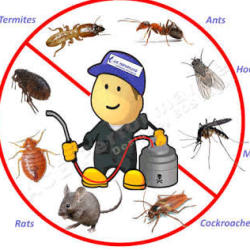Pest spraying is the process of destroying pests, which include termites and cockroaches, in addition to any other pests which may be in your house or business. It is done by killing the pests with toxin and a sprayer that has been equipped with an automatic sprayer attachment.
It is important to note there are many different types of pesticides available on the market nowadays, and it may be confusing to choose the most suitable one to suit your requirements. 1 way of understanding which kind of pesticide will best suit your specific situation is to learn about different types of pest sprays in the marketplace. Some of the commonly used pesticides include:

Insecticides: This category includes different formulations of pesticides that were made to work against specific insects, including flies, bees and rodents. These types of pesticides do not harm humans and animals, but they may be poisonous to pets.
Types of Pest Spraying
Biological Insecticides: This class includes distinct formulations of pesticides that are made up of specific organisms that kill certain pests. Examples of those organisms comprise baits, which can be placed around your house to attract flying insects, and liquid insecticides that are sprayed on the floor itself, so the insecticide works deep into the soil.
Termite Pest Pesticides: These are usually very poisonous and should be treated with extreme care, because they are very strong poisons which can be fatal. Termite pesticides can be either fogging or spray based, depending upon the toxicity levels they’ve. They are also occasionally available in a spray form, which can be used for pest management.
Watering is another remarkably popular method of insect spraying. This method uses water to destroy and exterminate pests which are residing within or have invaded a building. Watering is generally performed on a monthly basis, with the aim of removing any insects from entering your building or dispersing to new areas.
Types of Pest Spraying
There are a number of other procedures of pest management that aren’t necessarily dyes, but are deemed useful alternatives. Some of those methods include:
Additional Methods of Pest Control Comprise:
All pest control methods can be dangerous and should only be used under professional advice. When using any sort of toxin or pesticide, it’s ideal to follow the directions carefully. Additionally, before using any kind of pest management product that you need to consult with the regional government department of health to see whether they require any testing or licensing to ensure the item complies with the guidelines of your state.
